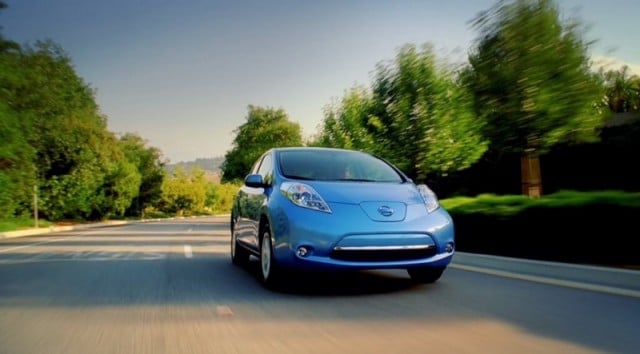
Brought to you by Cosmos Magazine and The Echo
Electrification shouldn’t ignore remote communities.
It’s often assumed that electric vehicles (EVs) aren’t practical in regional Australia – the distances are too big. But a new analysis casts doubt on this, suggesting that over 90 per cent of Australians in remote northern communities could get to their nearest service hub town in a short-range EV – without stopping to charge once.
The analysis, published in Australian Geographer, looks at all of the remote communities in northern Australia (that is, everywhere north of the 28th parallel).
“Electric vehicles shouldn’t be left in the too-hard basket. It’s an unequitable and unfair path forward if remote and regional communities are the last ones left driving diesel vehicles, especially as they will be some of the most impacted by catastrophic climate change” says co-author Dr Björn Sturmberg, a research leader in the Battery Storage and Grid Integration Program at the Australian National University.
“Yes, the barriers are obvious – large distances, unsealed roads. But the benefits are equally obvious. It’s difficult and expensive to get diesel out to these communities, and electric engines are simpler and more robust than fuel engines.”
The large-scale analysis looked at remote communities’ access to towns with populations over either 5,000, or 1,000.
“The model of service delivery in all these communities, at a government infrastructure level, has been what they call a ‘hub and spoke model’ for quite a while now,” explains Sturmberg.
“We consider small service hubs of 1,000 people, or larger service hubs of over 5,000 people. Healthcare, banking, groceries or whatnot – those services are offered in these hubs, and members of remote communities drive to them.”
The researchers examined whether towns of either 1,000+ or 5,000+ people were reachable by remote communities with either short-range EVs (336km), or long-range EVs (660km). This created four different scenarios.
| Direct access to… | Towns of 5,000+ | Towns of 1,000+ |
| Short-range vehicle (336 km) | 81% | 93% |
| Long-range vehicle (660 km) | 95% | <99% |
They found that 81% of people in remote communities would be able to get to a town with a population of more than 5,000 in a short-range EV, without stopping to charge the car. An additional 15% of people would need only one charging stop to reach a big town.
With long-range vehicles, 95% of the regional population would be able to make it to a town of over 5,000 directly, and 4% would need one stop.
But slightly smaller towns, with a population of 1,000 or more, were even more accessible. Over 93% of the regional population would be able to drive directly to such a town with a short-range vehicle, and just 0.3% of people would need to stop to charge more than once.
Nearly everyone (99.7%) could get to a small town in a long-range vehicle, without stopping.
Read more: EV manufacturing: should Australia make electric vehicles?
Obviously, residents of these communities aren’t always headed to the nearest service town when they’re driving. But given that EVs can also be charged at houses and private buildings, Sturmberg says that travelling between these communities should also be feasible.
The study is preliminary, and the researchers point out there is still a range of barriers to EV uptake in regional and remote Australia.
“For example, we still don’t have clear data on the impact of unsealed roads or different conditions on the effective range of electric vehicles,” says co-author Dr Francis Markham, a research fellow at ANU’s Centre for Aboriginal Economic Policy Research.
“And information on the performance of electric vehicles in very hot conditions is still lacking. However, we are confident that electric vehicles do have a place in regional and remote Australia.”
In their paper, the researchers say that more work should be done to investigate what residents of these communities want and need to make EVs a viable option for them.
“I just really hope that this work motivates particularly the NT government, but also the governments of Queensland and Western Australia, to put some of their resources into charging infrastructure, and electric vehicle policies for remote communities, rather than just putting chargers along the tourist routes and highways,” says Sturmberg.
“Community members should drive into these towns, do their shopping, have somewhere to charge up, and then be able to travel back.
“That’s really what we need – particularly as most people are not going to be buying Teslas with ranges of 600km, but Nissan Leafs with ranges of 300km.”
This article was originally published on Cosmos Magazine and was written by Ellen Phiddian. Ellen Phiddian is a science journalist at Cosmos. She has a BSc (Honours) in chemistry and science communication, and an MSc in science communication, both from the Australian National University.




When they are new.
What are the percentages after 5-10 years? (When battery capacity has dropped by 20%, and 50%, etc)?
If you were truly concerned, you could contact the auto makers direct to get info about their batteries lifetime performance, then please do come back to us with the results.
You have to replace the batteries after 8 years as they risk short circuiting. These ‘long range’ EVs are hatchbacks. You don’t drive 200kms to pick up milk. How do you fit a half ton of supplies in a tiny back seat?
Bob, please do tell us which EV auto makers say “you have to replace the batteries after 8 years as they risk short circuiting”.
Accept they need utes and carry heavy loads to and from town so the range with those batteries would reduce to 50kms. A hatchback is useless to these people.
Our EV battery expert on the case once again.